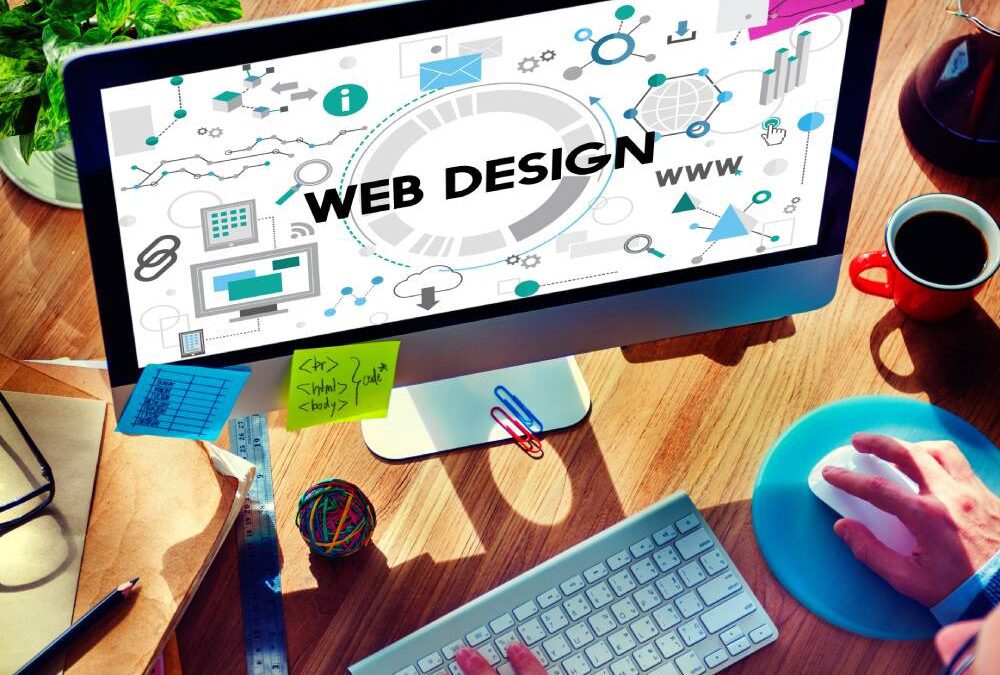Introduction
In the fast-paced and ever-evolving digital world, web design plays a pivotal role in shaping the online user experience. Your website is the virtual storefront of your brand, and staying updated with the latest design trends can significantly impact how your audience perceives and interacts with your business. To ensure your website remains visually captivating and functionally efficient, here are ten cutting-edge web design trends that will take your website to the next level:
1. Dark Mode Elegance:
Dark mode has quickly become a favorite among users due to its sleek and modern appeal. It offers a refreshing departure from the traditional light-colored websites and adds a touch of elegance to your web pages. Dark backgrounds not only create a striking contrast for text and elements but also help reduce eye strain, especially in low-light environments. When combined with vibrant accents and attention to detail, dark mode can create an immersive and captivating user experience.
2. 3D Elements and Illustrations:

Embrace the world of depth and interactivity with 3D elements and illustrations. Adding three-dimensional graphics to your website can breathe life into your brand, products, or storytelling. These visually stunning and engaging elements are known to capture users’ attention and leave a lasting impression. However, it is essential to use 3D elements judiciously, as an excessive use of them can slow down your website’s loading speed.
3. Micro-Interactions:
Micro-interactions are subtle and interactive animations triggered by user actions. They add finesse and personality to your website, making it more engaging and enjoyable to navigate. Whether it’s a button animation, hover effect, or notification animation, these small details create a sense of interactivity and enhance the overall user experience. Thoughtful micro-interactions can improve user retention and encourage repeated visits to your site.
4. Immersive Video Backgrounds:
Incorporate captivating video backgrounds to instantly grab your visitors’ attention. High-quality videos that showcase your brand, products, or services create a dynamic and immersive experience for users. Video backgrounds allow you to convey your message more effectively, engage visitors on an emotional level, and stand out from the crowd. However, ensure that the video content aligns with your brand’s identity and doesn’t overshadow other essential elements on the page.
5. Bold and Colorful Gradients:
Gradients have been a recurring trend in web design, and they continue to be prominent for their ability to add depth and visual interest. Bold and vibrant gradients create a sense of energy and excitement, making them perfect for websites aiming to exude a modern and youthful vibe. When used strategically, gradients can enhance your brand identity and make your website more visually appealing.
6. Customized Cursor Effects:
Make the user experience on your website more interactive and enjoyable by customizing cursor effects. Instead of the standard cursor, consider using custom icons or animations that align with your brand’s style. Customized cursor effects add an element of surprise and delight, making your website feel more dynamic and engaging. These subtle but unique interactions can leave a lasting impression on your visitors.
7. Minimalist Navigation:
Simplicity and ease of navigation are vital aspects of a user-friendly website. Minimalist navigation focuses on decluttering the menu and presenting only the most essential links. A clean and intuitive navigation system enables users to find what they’re looking for quickly, leading to improved user satisfaction and reduced bounce rates. By streamlining the navigation, you can create a more focused and distraction-free user experience.
8. Augmented Reality (AR) Integration:

As AR technology advances, incorporating it into web design opens up exciting possibilities for user engagement. AR elements can offer an interactive and immersive experience, allowing users to visualize products in real-world environments. For instance, AR can enable customers to see how furniture would look in their homes or allow them to try on virtual makeup. Implementing AR technology can set your website apart from competitors and create a memorable experience for your audience.
9. Voice User Interface (VUI) Design:
With the rising popularity of voice assistants and smart speakers, VUI design has become crucial for enhancing user accessibility. Optimizing your website for voice search and integrating voice interactions can cater to a broader audience. Voice search is becoming more prevalent, and websites that adopt VUI design will be better positioned to serve users who prefer voice commands over traditional typing.
10. Accessibility-First Design:
Web accessibility is not just a trend; it’s an essential responsibility for all website owners. Designing with accessibility in mind ensures that all users, including those with disabilities, can access and navigate your website easily. Prioritize features such as clear and readable text, keyboard navigation, descriptive alt text for images, and proper color contrast. An accessible website not only improves user experience for a broader audience but also aligns with ethical and legal considerations.
